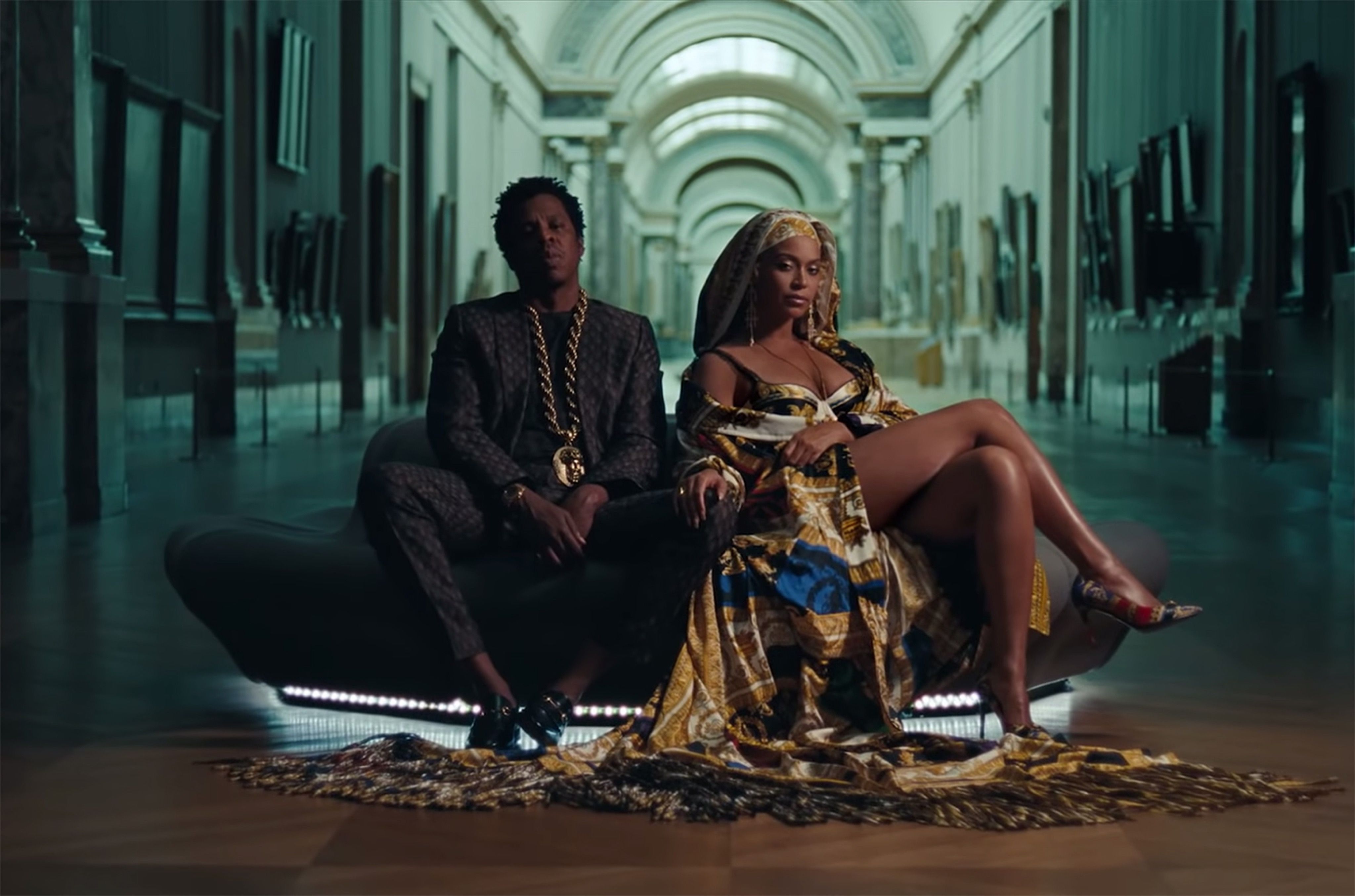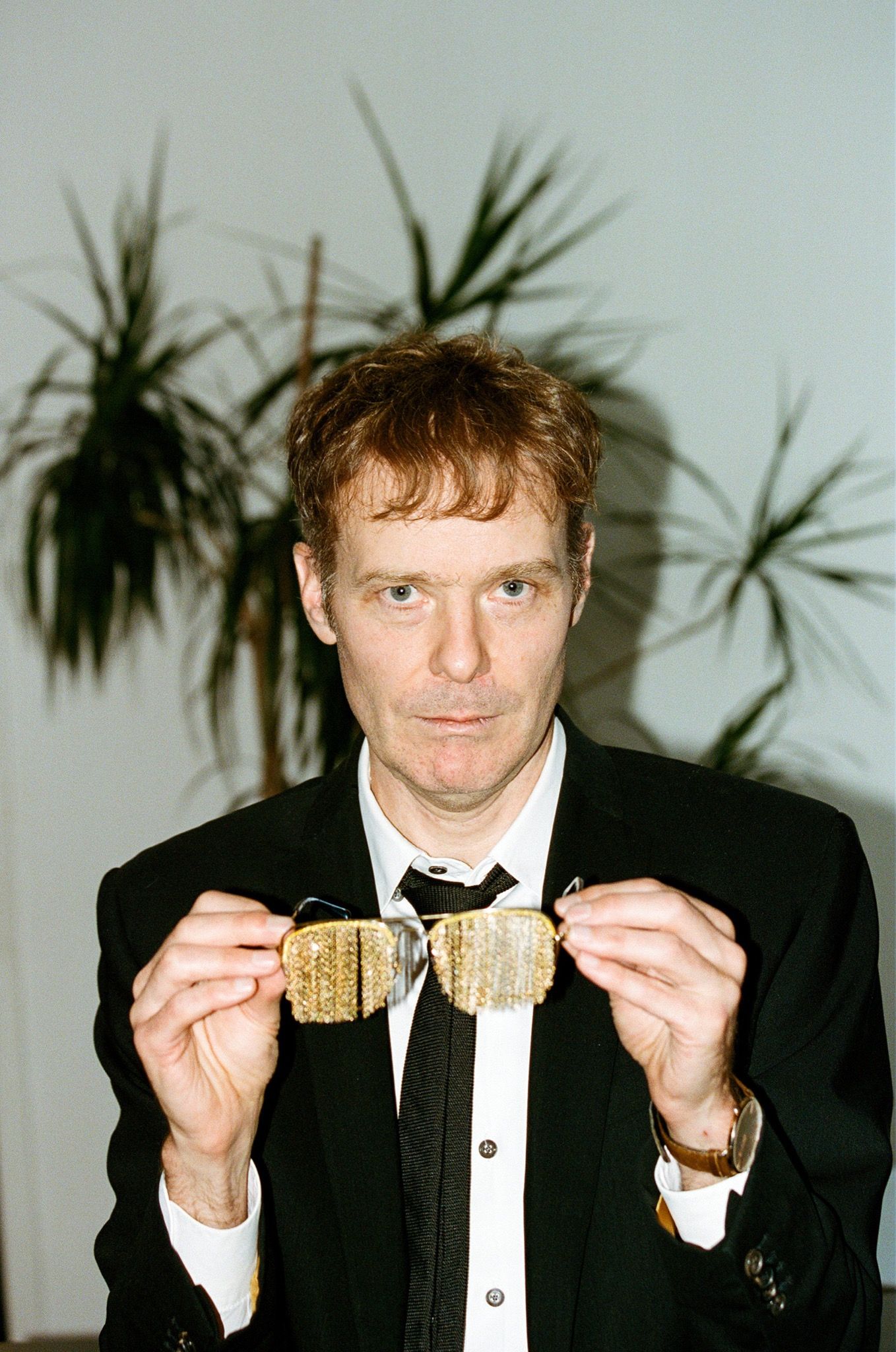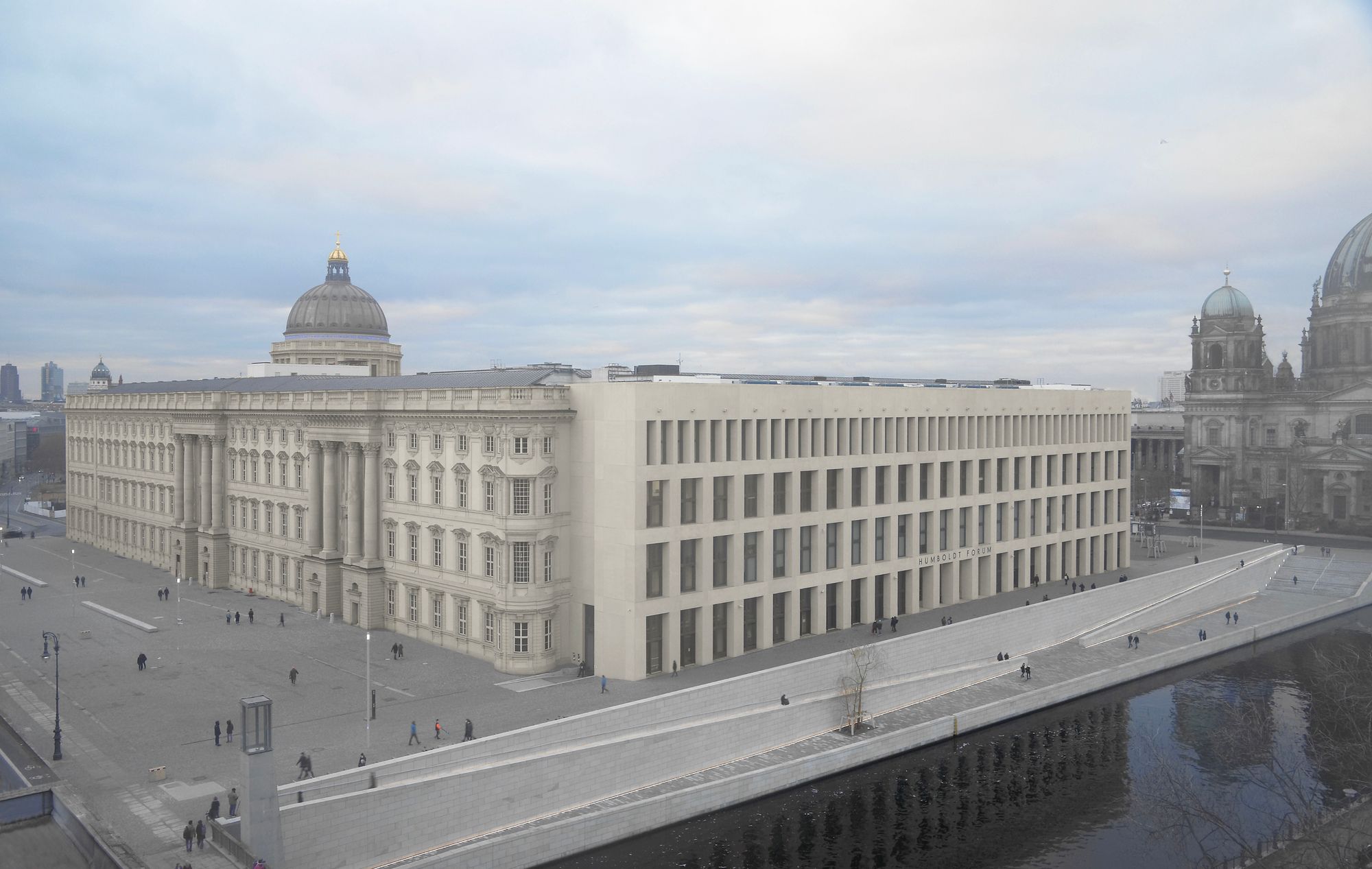SPRÜTH MAGERS: The Art Gallery and the World
|Victoria Camblin
Sprüth Magers came into existence in 1998 when Monika Sprüth and Philomene Magers merged their galleries, founded in Cologne in 1983 and 1991 respectively. They now have museum-scale locations in London, Los Angeles, and Berlin as well as offices in Hong Kong, Seoul, and Cologne. Beginning with a transatlantic roster of primarily German and American artists, they launched the international careers of Rosemarie Trockel and the duo Peter Fischli & David Weiss, and gave artists such as George Condo, Jenny Holzer, Barbara Kruger, and Ed Ruscha a home in Europe. Sprüth Magers’ founders have created a global footprint while evading the “mega-gallery” status negatively attributed in art journals to galleries such as David Zwirner, Hauser & Wirth, and Gagosian. They are unique among the commercial art world’s major players in their reputation for being artist-focused, curatorially rigorous, and critically engaged with art institutions and scholarship. The stated philosophy of alliance and engagement that underpins their partnerships and multi-city imprint has turned out to be good for business, too, as market survival has demanded global expansion. Sprüth Magers’ growth did not take place in a bubble. In an industry that precludes its own understanding – a milieu defined not by transparency but by insider knowledge, social strategy, and untold wealth stored as artworks in freeports – Sprüth Magers’ history is a mirror of cultural, economic, and political discourse, reflecting a globalized art world at times at odds with itself.
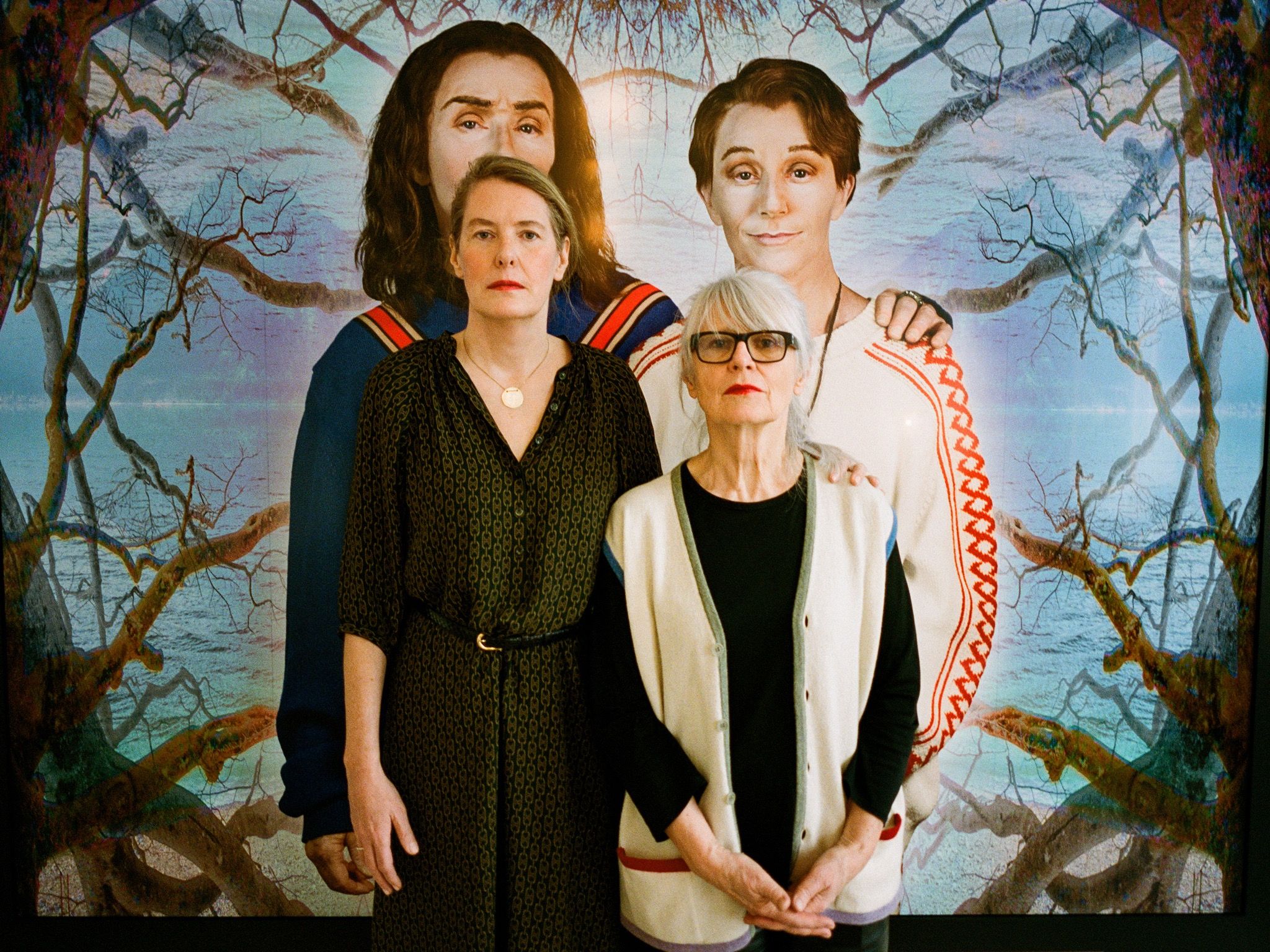
When Monika Sprüth opened her first gallery, Cologne was booming. 95 percent of the city center was destroyed during World War II, and reconstruction invested heavily in new thoroughfares. Infrastructural improvements grew Cologne – sandwiched between the provisional West German capital of Bonn, and Dusseldorf, the region’s political center – into one of the most accessible metropolitan areas on the European continent. The exemplary “Miracle on the Rhine” maintained its powerhouse status as coal mines and steel production gave way to the lighter industries of insurance and media, and skyscrapers began to pierce its carbon-laden skyline with corporate HQs. As West German industrial barons invested capital in art – acquired as part of the country’s strategic post-war rebrand – the medieval cultural legacy lost in the war came back with a vengeance, and with new equipment.
By the 1970s, Cologne had Walther König’s flagship art bookstore; Karlheinz Stockhausen’s world-renowned electronic music studio; and, thanks to chocolate magnate Peter Ludwig, the largest collection of Picassos outside Paris and Barcelona – plus a ton of American pop art. Cologne also had artists, and art dealers. The overseas popularity of Georg Baselitz, Sigmar Polke, Gerhard Richter, and Joseph Beuys put German artists on the international map. Dealers including Rudolf Zwirner, who exhibited Cy Twombly, René Magritte, and Roy Lichtenstein in Cologne – and co-founded the “world’s first art fair” there – put Germany itself on it. The Kunstakademie Düsseldorf, where professors Beuys and Richter had become international institutions in themselves, fed young artists into the nearby Cologne scene. Hyper-connected culturally, socially, and geographically, the city needed only the 1980s’ ruthless free-market spirit and materialism for its art market to explode. Cologne’s cantankerous German art elite found unlikely but fruitful parallels with the Wall Street decadence of the era, and the industrial city on the Rhine became – second only to New York – the world’s most important city for contemporary art.
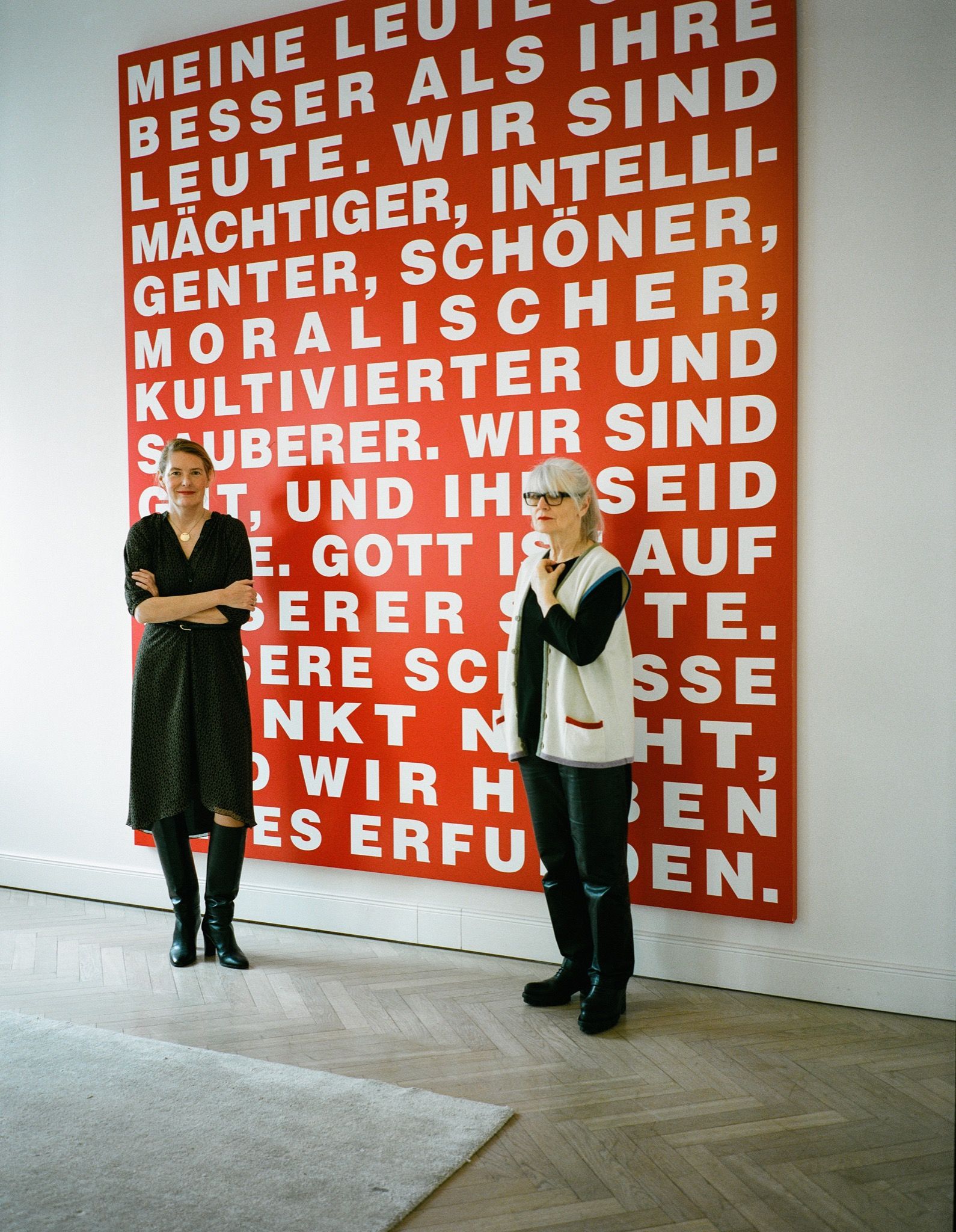
In a 2003 article for Artforum called “Ripening on the Rhine: The Cologne Art World of the 80s,” Swedish curator and former director of Frankfurt’s Städelschule Daniel Birnbaum describes a scene with its “own social codes,” awash with bullying, sarcasm, one-upmanship, and sexism, and drenched in alcohol. The story of Sprüth Magers is one often told as a women-directed success story in a competitive and male-dominated milieu. Soon after Monika Sprüth opened, however, she was joined by Gisela Capitain, Esther Schipper, Tanja Grunert, and Sophia Unger – gallerists who flourished within the local ecosystem alongside male colleagues such as Max Hetzler and Daniel Buchholz. Sprüth and Magers’ feminist reputation came from their programming. Rosemarie Trockel had the first solo exhibition of her remarkable career at Monika Sprüth in 1983. Eau de Cologne, a publication and exhibition series organized by the gallerist between 1985 and 1989, platformed women artists exclusively. Among those featured were Cindy Sherman, Barbara Kruger, and Jenny Holzer, all of whom continue to show with Sprüth Magers. Still, why Sprüth is described as the founder of the “first art gallery for women” on the organization’s German-language Wikipedia page remains unclear: she opened her doors in Cologne with a show by Andreas Schulze, a (male) painter. Magers opened with a Sylvie Fleury show in Bonn, but the stars she brought to the 1998 merger were Donald Judd, Robert Morris, John Baldessari, and Richard Artschwager. The only artists mentioned above who do not still work with Sprüth Magers are dead – and the gallery works with their estates. What distinguishes their business is not their representational track record, but the longevity and apparent sturdiness of its artist relationships.
When approached for a quote for this article, Kruger credited the gallery for giving her work “visibility in Europe at a time when art by women was rarely shown, and if it was, sometimes [it was] arrogantly stereotyped.” Kruger also described the “clarity, focus, bravery, and humor” of the gallery’s program over the years, and the “friendship and support” she has received from the relationship. Andreas Gursky replied using similar terms, referring to Sprüth Magers’ “intense” engagement with his work as “more of a friendship than a business partnership.” Sterling Ruby told me he relates to Sprüth and Magers “like family members who are protective and deliberate,” and Analia Saban said the gallerists assured her early on that they “were in it for the long term.” “This is your first exhibition in Germany, nobody is going to care about it,” Saban recalled Magers telling her at their first meeting, “but we don’t mind that.” Several artists noted the “liberating” feeling and sense of “freedom” that such consistency can bring to an artistic practice. David Ostrowski wrote that “Sprüth Magers is like the soccer club 1. FC Köln: a club with great traditions and values.”
A similar dynamic of trust and longevity underlies the co-founders’ partnership. Magers grew up in her mother’s gallery in Bonn, assisting in daily operations as a teenager. That was when she met Sprüth, who was working as an architect and urban planner at the time. “Then Monika opened her own gallery, and I somehow got into doing it, too,” said Magers. The pair started collaborating early on, joining up for a booth at Art Basel one year in the late 1990s. Seeing their artists hung together made sense, as if they were deliberately cross-referencing each other. “We had a mutual understanding about things and mutual interests,” recalled Magers, “especially in artists.”
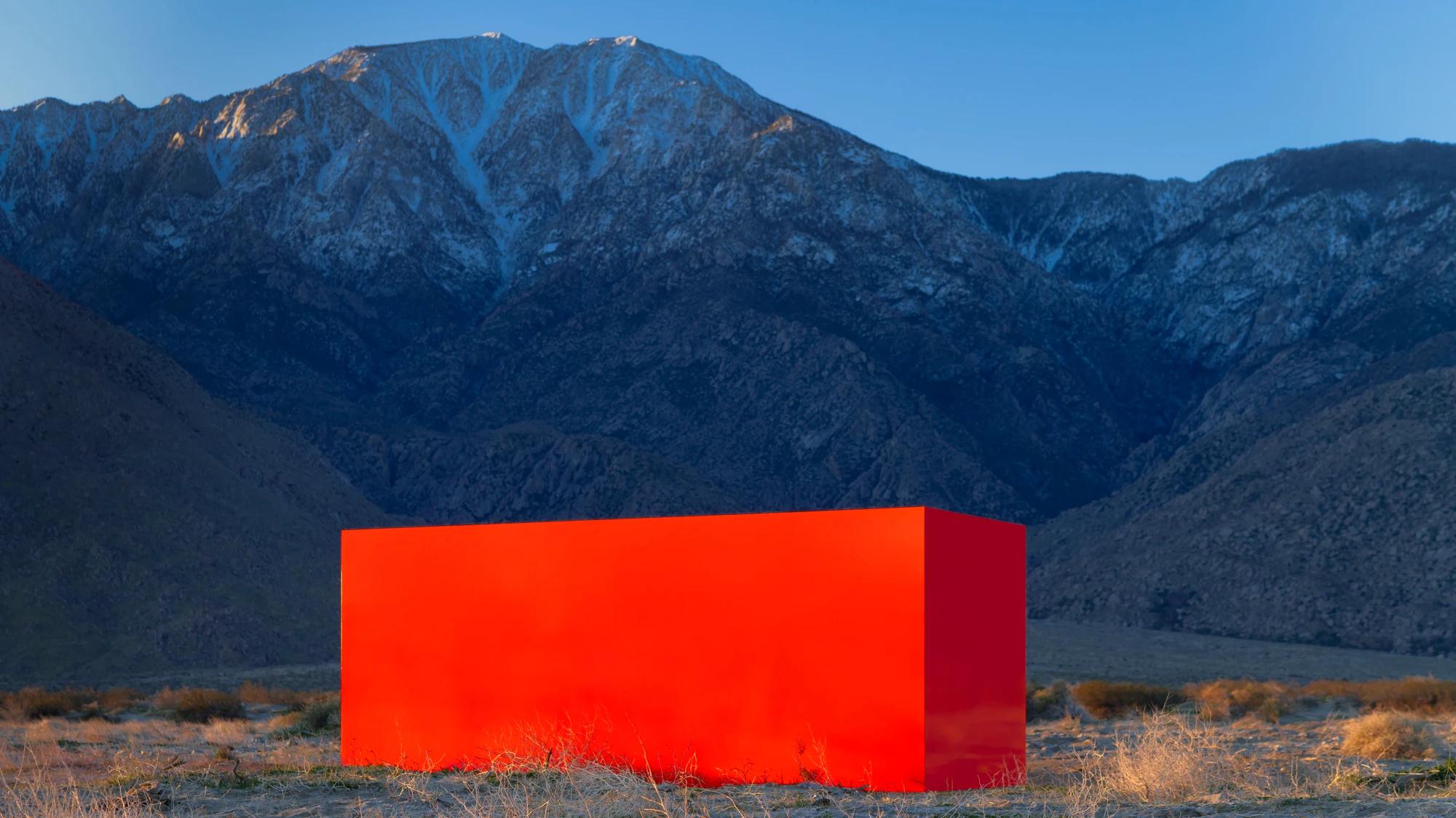
VC: In some partnerships you see patterns or archetypes emerge – maybe one is the business person, the other is the artist person, for example.
MS: It would be great if I was the business person! But we both play both roles. I must say, for a long time I was surprised that the gallery was kind of successful. I thought it was strange. But I realized that when you make very precise decisions about the artists you show, in our field that is being successful business-wise. You cannot show every artist. There has to be an idea behind it. You can try to see which artists might have a long life or sustained cultural importance – and our gallery has been lucky to cover many of these artists. Automatically, a certain kind of business success followed there.
VC: I read an article in a German newspaper that called you the “most successful gallery owners in the world.” How do you feel about that?
PM: I would never say that!
MS: I always say we are “the biggest failure in the art world.” Sometimes I say it to shock people, so they look at me trying to understand why, because they know we are a successful gallery. But it’s more complex than that – it is about understanding why something is successful. Of course we should be successful for our artists.
VC: What else do you prioritize in your relationships with artists?
PM: There are galleries and artists that see the relationship merely as a kind of financial partnership. We’re definitely in a different camp. Each artist is different, but in general, our artists like to be in a conversation with us about what they’re doing.
MS: I’ve often heard over the years from artists that they really appreciate the discourse they have with us, that it’s very important to them to have a kind of ongoing discussion. Not only about their work, but about the world in general. Of course, they also appreciate that we are very loyal business partners.
PM: If you want the longevity, both sides need to want it. In this period of fast-paced capitalism, longevity only happens when there’s loyalty – when there’s that social tissue holding everything together. This is something that we’re very much invested in.
VC: One could call this sustainability, too – not in an environmental sense, but in terms of a career or a relationship, of preserving connections or a cultural footprint.
MS: There’s no way not to observe what the world is doing. Even if you then have to go into a business discussion, the question must still have to do with what importance culture has in our world. That is why we have a gallery.
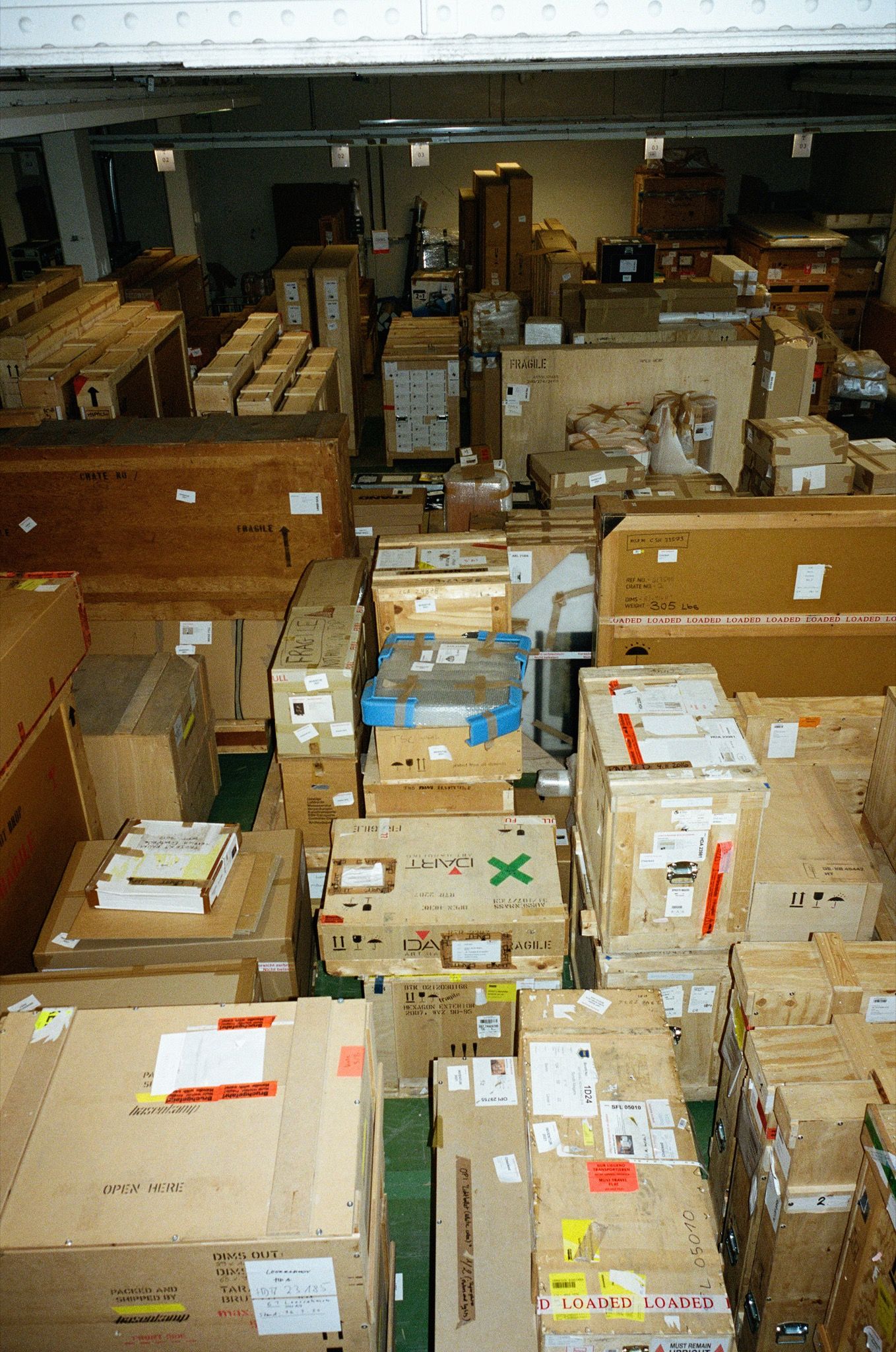
Julian Stallabrass’ Art Incorporated (2004) posits 1989 as the year of the “global turn” in art, citing “the reunification of Germany, the fragmentation of the Soviet Union, the rise of global trade agreements, the consolidation of trading blocks, and the transformation of China into a partially capitalist economy” as world events that profoundly changed the industry’s character. Art and culture are given significant importance under the Maastricht Treaty of 1992 as symbols for free global trade. Cologne, and its art world, were well positioned to benefit from the disinhibition. The subtext of Birnbaum’s Artforum article is that what was really “ripening” there, on the Rhine, was the “global art world” – in its Western, transatlantic conception – as we know it. Cologne has always been a place of international trade. Logistically advantaged by land, air, and even sea connections, with inland ports and airport freight terminals that are among the largest in Europe, its status as a mercantile hub goes back to the 13th century, when Hanseatic trade routes connected it directly to London. It was thus a long-traveled path that Sprüth Magers followed in 2003, when they opened a space in Mayfair.
The United Kingdom was already the Union’s most Euro-skeptical country. Then, in 2003, a massive expansion of the EU – its largest to date, ratified by electorates in ten joining-member countries – made London’s population more international, and made Britons more chafed by Continental influx. The same year, London introduced a congestion charge to reduce traffic in the center of town. The move came to symbolize the rapid increase to the cost of living in the city, which had recently poured money into millennial renovations and infrastructure – partly to attract capital from overseas. Post-Y2K and pre-2008 crash, the consequences of global engagement were on people’s minds.
Meanwhile, like Cologne’s legacy, globalism was on Artforum’s table of contents. Writing for the magazine in 2003, Pamela M. Lee argued that “a troubling distance between the art world and the global order still remains.” Artists and critics had read Michael Hardt and Antonio Negri’s Empire (2000) and attended Okwui Enwezor’s documenta 11, which aimed to “describe the present location of culture and its interfaces with other complex, global knowledge systems.” People had also been to the first annual Art Basel Miami Beach in 2002, when the fair became a particularly hedonistic example of the art world’s doubling down on the very same globalized agenda that had begun to concern its constituents. Galleries, like international fairs and biennials, were multiplying. Hauser & Wirth expanded to London from Zurich in 2003, and Gagosian opened two spaces there in the first half of the 2000s. Meanwhile, the art on view “responded to contemporary geopolitics largely through representations of the global and its thematics,” according to Lee. “But this tack offers a relatively limited picture of the sociopolitical situation, reflecting an art world that still sees itself as distinct from the ‘real’ world ‘outside’ it, analogous, say, to the way that a figure is positioned in relation to its ground.”
"I think the future is thinking about alliances, rather than this idea of doing everything yourself."
MS: I’ve always known that if you really wanted to have a voice at a moment in culture, you have to be in the discourse. And when I opened the gallery in 1983, I thought, “We should have a gallery in New York immediately.”
PM: That was where the power was.
MS: And there was a strong cultural connection between New York and Cologne, of course.
VC: But in 2003, you opened a gallery in London. Why?
PM: Within Europe, London was clearly the place where the international art market was happening.
MS: In a way, London felt more international. New York feels like New York. And London was always more international than Berlin.
VC: Has Brexit already started to change your relationship to London?
PM: We love London, and we feel extremely connected there. I think there is a really good spirit in London among galleries right now. At the beginning of the pandemic, galleries started working closely together, asking each other, “so how are you doing this, where are you getting masks?” Somebody had a contact to somebody who would distribute hand sanitizer. I was extremely impressed by that push of solidarity between galleries and thought it was very healthy within this power-driven art world, where you sometimes have the feeling that everyone is trying to push everybody else aside in order to somehow “win.” We have always been very interested in collaboration – and today, unless you want to become a huge gallery that is light on the programming, you need to build alliances. That is something that has been amplified throughout the pandemic, where we’ve been seeing a lot of solidarity initiatives developing, with art and museum workers asking for unions. We’re thinking about how we can build solidarity structures that are sustainable. Now there’s a really interesting solidarity scheme that’s developed out of that called the GCC – the Gallery Climate Coalition – which is now branching to Germany.
MS: In this confused world, you have to have alliances where you can get support.
VC: Sometimes social and political changes erode the networks of shared values you describe, rather than solidifying them. You opened your space in LA in early 2016, months before Brexit, and less than a year before Trump. Were you like, “what have we done?”
MS: It was John Baldessari and Barbara Kruger who helped us understand that LA is somehow more artist-oriented, that LA made sense discourse-wise. Maybe business-wise, New York would have been better, but that is never our focus. The move was clear.
VC: Los Angeles is a production center; New York is the commercial capital.
MS: That’s the danger – New York wasn’t like that in the 1970s, but then art became a commodity. That’s why we instinctively stayed away.
PM: When I first went to Los Angeles, I was 21. I was really mesmerized by the idea of a city without a center. I had deep culture shock, but at the same time I realized that it was probably the most contemporary city that I had ever been to in my whole life. I went back the next year and saw the [MOCA] show “Helter Skelter,” which completely changed my understanding of what was going on there. I noticed this extreme shift from the New York discourse of the 1960s, 1970s, and 1980s. So, even at that time, it felt like that’s where contemporary discourse was happening.
VC: Has being in the US these last five years evolved your program or the conversations you’re having?
PM: At the high tide of what was happening in the US last year, politically, we felt that we had to do something at the LA gallery that would give visitors some sort of relief – a moment where they could come in and experience something that made a statement, but that was also emotionally soothing. We invited Senga Nengudi to do a show that would really work within that. She obviously couldn’t come to LA, so installation took forever – we had to build it with her over FaceTime, and it was limited to very few visitors a day. Artists, intellectuals, curators – everybody immediately booked these appointments. So it did what it set out to do. Of course, it was a commercial show, and subsequently several American institutions purchased Senga’s work. But that wasn’t the perspective. Trump was acting out of control. After George Floyd’s murder, whenever we were on Zoom with our staff in LA you could hear the National Guard helicopters over their houses.
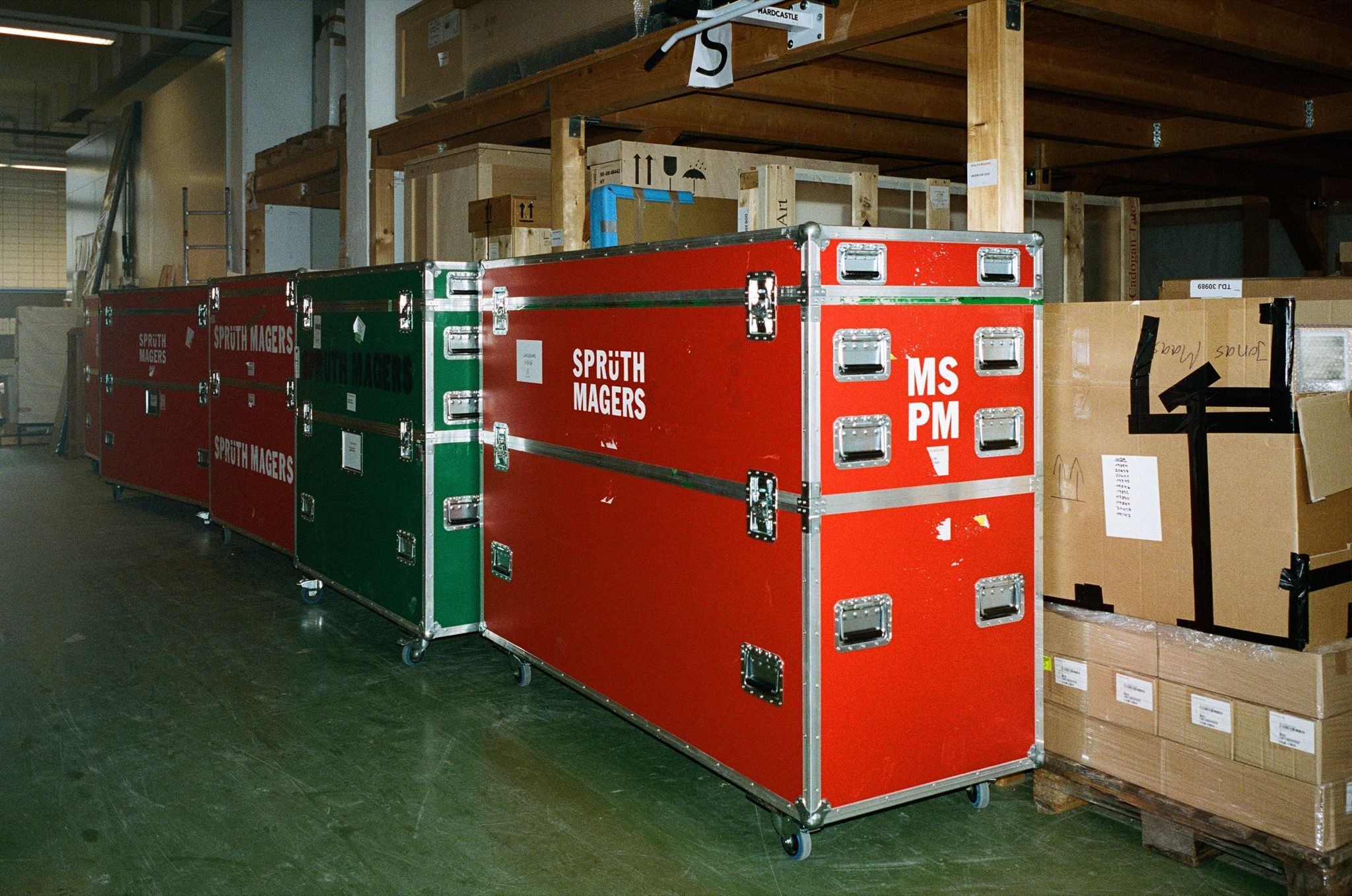
In 2008, the year Sprüth Magers opened in Berlin-Mitte, then-presidential candidate Barack Obama gave a speech in the German capital. He urged an international audience to look at the city as an example of globalism in action, where “a victory over tyranny gave rise to NATO, the greatest alliance ever formed,” where bullet holes in public monuments remind us of our “common humanity,” and where the fall of the wall proved “that there is no challenge too great for a world that stands as one.” With China entering the market, art sales were breaking records at the time. The impact of the imminent crash would be “sharp but brief,” according to artprice.com, as the “euphoria so apparent in 2007 continued during the first half of 2008 despite the financial and economic shock waves triggered by the subprime crisis.” Famously “poor but sexy” Berlin had already attracted both emerging and high-profile international artists, and it began to draw dealers and collectors wishing to be in their proximity as well.
Sprüth Magers’ expansion has been at once motivated by that proximity and a deliberate – at times conservative – eschewing of the “pioneering” impulse of smaller spaces that tend to gamble on cities or neighborhoods in flux, and the tendency among larger galleries to set up everywhere they can. In Berlin, they chose a building that once belonged to the psychology department of Humboldt University, located near the city’s historic Museum Island and the Boros Sammlung – a slick private collection housed in a former bunker that opened in 2008 as well. A 2016 article in the Financial Times described Sprüth Magers’ approach as “measured, sanguine, and shrewd,” part of a necessary, if counter-intuitive, effort to “stay small.” Sprüth Magers has consistently invested in established cultural and economic centers. In 2007, when they moved to their current address in Mayfair, London was ranked the second most expensive city in the world; in 2019, the UK price comparison website MoneySuperMarket reported that properties on Grafton Street – the gallery’s address – were the costliest in town. In LA, they opened their 14,000 square-foot space on Miracle Mile, across from the Los Angeles County Museum of Art, surrounded by museums and attractions.
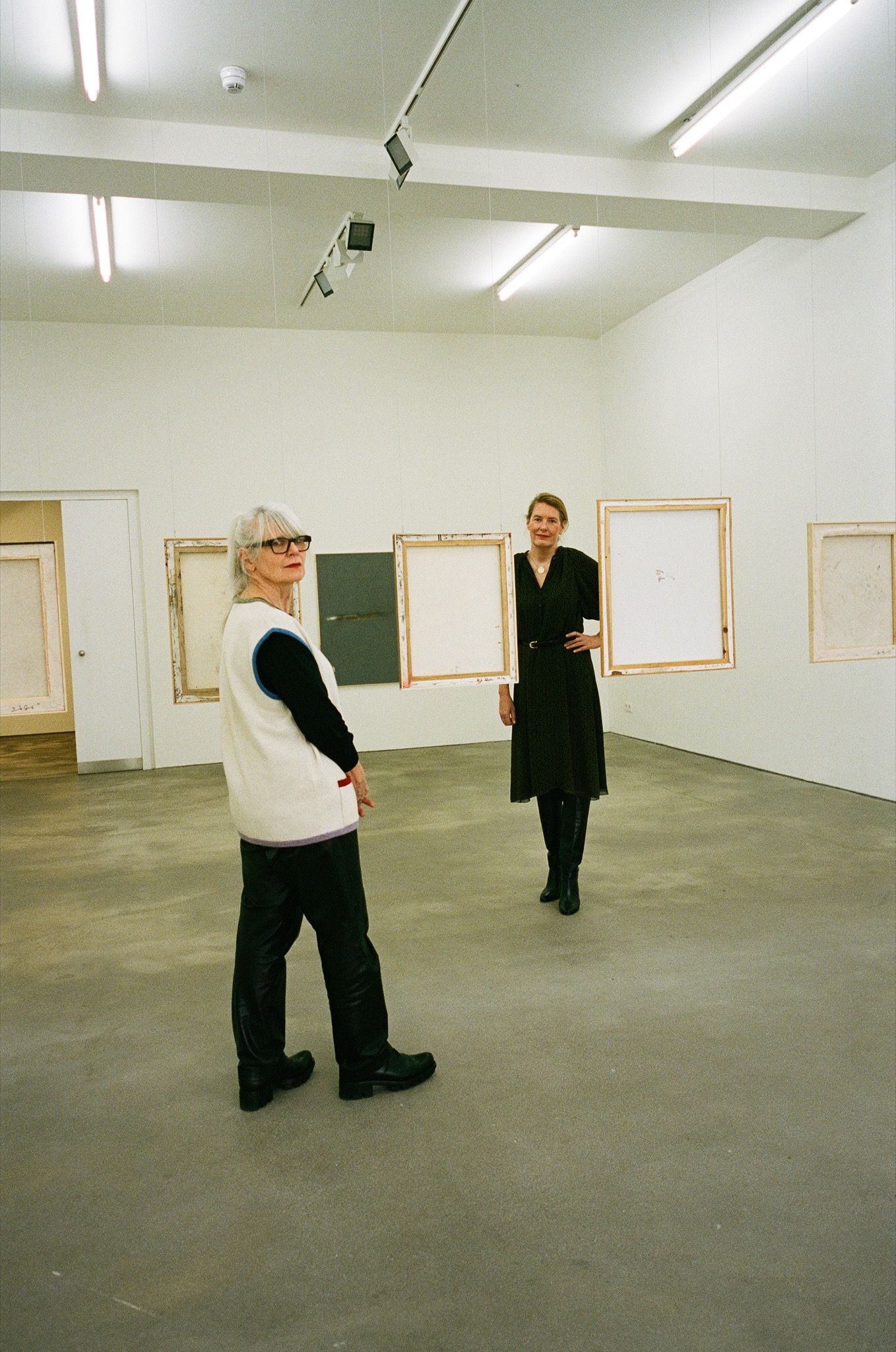
VC: When you have an audience that exists on both sides of the Atlantic, the exercise is also figuring out how to locate connection, how to create parallels between experiences.
PM: At the same time as Senga Nengudi in LA, in London we had a show with two female German artists, Hanne Darboven and Ruth Wolf-Rehfeldt. Darboven is one of the few West German women artists who had real international success, and Wolf-Rehfeldt was an important minimalist GDR artist who was completely under the radar until a few years ago. She wasn’t even part of the big show at the LACMA, "The Art of Two Germanys." We were thinking that with the looming Brexit situation in England it would be interesting to do something about the divide. In Germany, we’re having this problem that the West has just eaten up the East, and that subsequently is generating a lot of problems now. We have deprived part of Germany of its inheritance. You really have to react to the geopolitical situation of the different places you’re in. The pandemic is confronting us with that, but it’s a conversation that has been disregarded for too long. And sometimes, when you’re coming from a certain culture, it’s almost embarrassing going into another one. We feel that it’s really important to not work with a kind of imperialistic gesture toward different venues, but to really do something that makes sense within the spirit of the individual place.
MS: You have to value the cultural exchange, but at the same time, you have to do it from the perspective of your own culture, otherwise it’s not authentic. That’s also about respect. We’ve tried to focus on that kind of cultural history of a given region, to respect and to reflect that, not to forget about it.
VC: So galleries must now go through the local discourse to get back to the international one – as opposed to becoming globalized by bypassing local specificities, which is the attitude that gave us the notion of the “art world.” But galleries have always contributed to local culture – simply occupying a particular building can have a gentrifying impact, for example.
MS: Our London and LA spaces were very much chosen with the idea also to be based in the culture of that country and city. Looking at architecture leads to understanding better why a certain type of art has been developed in a certain area. And trying to understand and respect the culture where you open the gallery is the interesting part.
PM: So is trying to understand the geopolitical situation. We’re discussing it everywhere: how to create more of a local relevance. We’re supporting a lecture series at Art Center in Pasadena curated by Jack Bankowsky, and our team has been working on more inclusive programming and bringing art students into the gallery. This is a perspective that was neglected by the intense market that’s dominated in the last couple of years.
VC: Before the environmental conversation picked up, before Covid and the murder of George Floyd, China was one point of focus for galleries concerned with reflecting their politics in how and where they do business. It was interesting to see galleries chagrined about Art Basel Hong Kong doing the mainland fairs without hesitation. Presumably the sales there were expected to be large enough to offset the reservations.
PM: Once you start doing this in order to survive, you have to question yourself: what am I doing here? We’re not special in the sense of experiencing the world in a completely different way than other people. We also completely fed into the fast pace of the last 15 years. We felt obliged to do all the art fairs and to be on the run all the time. We always tried to do things that were special, to catch the discourse of the moment, but at the same time we were completely driven by this globalizing idea of bringing shows by our artists to all of our spaces and having everybody be present everywhere, all the time. With how we were all traveling, our way of assembling information and forming sentiments about the state of the world also massively changed. Way before Covid, it was clear there was going to be a seismic shift in the tissue of the world that would require a completely different approach than the one the globalized art market has taken. I’m not talking about a big gallery opening up in China knowing artists won’t show there because they’d be censored. I’m talking about doing something really necessary to point to discussion in a very specific place.
VC: Public programs and institutional partnerships didn't use to be on the radar for commercial galleries – gallery openings functioned as outreach instead. Collectors would buy out the show before it opened, but the gallery would still do a party, the avant-garde would come and drink the beer, and you’d create a gallery brand by putting energy into a local cultural ecosystem. That function is less tangible than sales, and it is something you really can’t do digitally. Even if you can take a fair online – which is already a big “if” – you can’t do an opening there.
PM: The digital fairs really only work because people are so conditioned to Art Basel Miami, et cetera, that the online event provides a reason for them to act. What we found more productive was creating something interesting by ourselves: doing an interesting website with interesting projects on it. Obviously, it’s also saving a lot of money not doing the fairs, and you really tremendously reduce your carbon footprint by not holding them.
VC: People were already burnt out on fairs in real life, right? There was already this incipient fatigue or guilt whenever you got to the convention center, whether it was in Miami or Hong Kong.
PM: Cao Fei had a really important show at the UCCA in China recently. We couldn’t be there – and that’s a problem. We did a Zoom walkthrough, and it’s an incredible show – she basically built an entire cityscape inside the UCCA. Right now, you can only see it in China – and yes, it is super relevant there, but it’s also an important show for people to see abroad, precisely because it is talking about China’s DNA. We thought, “We need to find a way to present this to the rest of the world somehow,” and started talking about how we could do that.
MS: And what makes sense digitally.
VC: What did you conclude?
MS: We are unfortunately caught in a field where globalization is necessary: culture. Food, medicine, even clothing, design – we know how to make those locally. We don’t need to ship all that product. But with culture, it’s different. That was the positive part of globalization: we began to understand how important understanding and being exposed to difference is to culture.
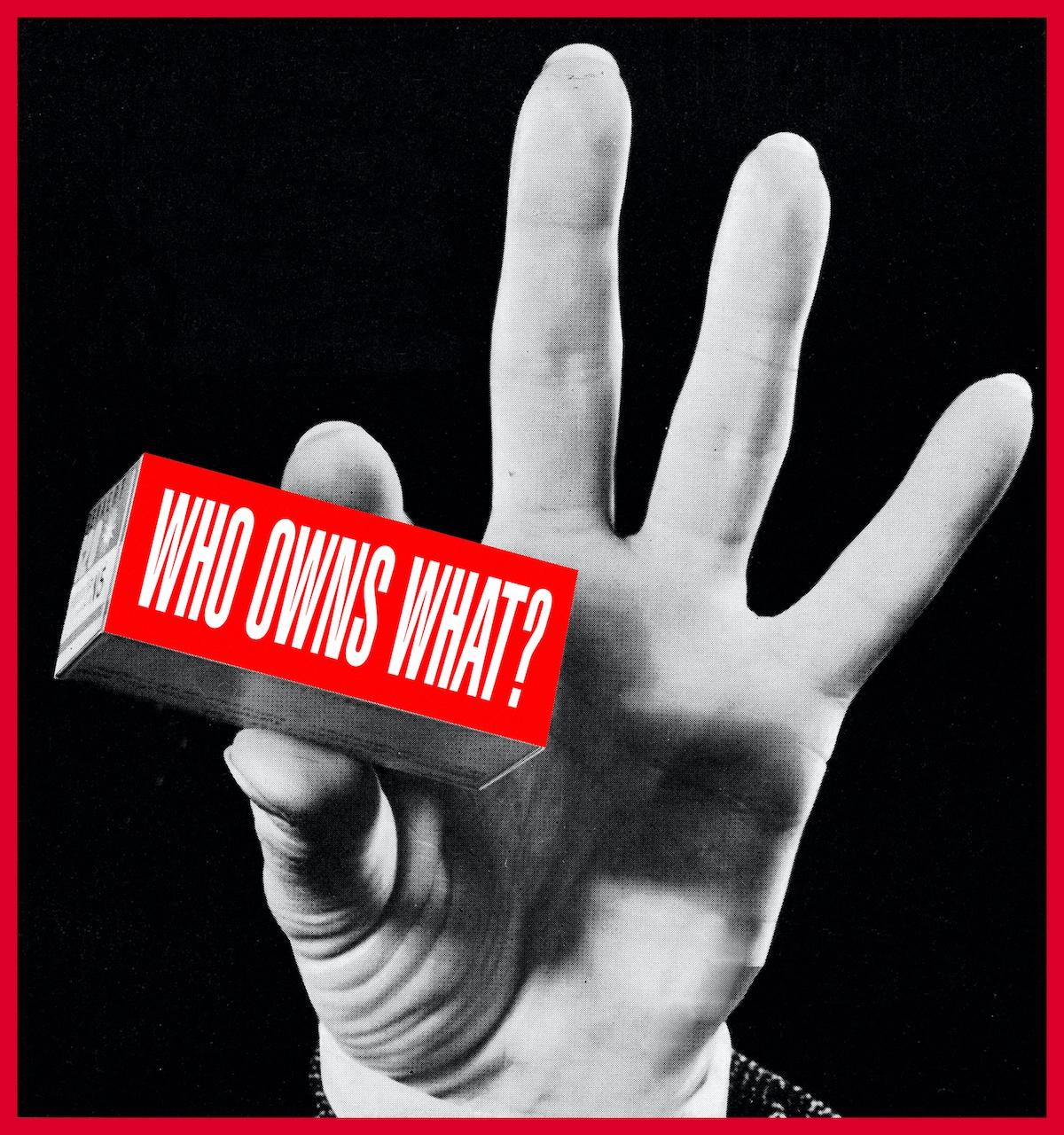
Numerous artist biographies on Sprüth Magers’ website mention an interest in globalization, including those of Cao Fei, Andreas Gursky, Fischli & Weiss, Sterling Ruby, even Kraftwerk. Political scientist Joseph Nye describes globalism as an attempt “to understand all the inter-connections of the modern world” and explain “a world which is characterized by networks of connections that span multi-continental distances.” Both globalism and globalization, Nye wrote in 2002, can be broken down into four dimensions: military, economic, environmental, and social and cultural. In the past, the last item has tended to follow the previous three; in the digital age, however, the flow of ideas has become independent of the networks of force, capital, and transport of industrial or biological materials that underlie globalism’s military, economic, and environmental forms. We must not fear globalism, Nye reassures the reader: it will lead not to homogeneity, but to a diversity of input that will bring creativity and innovation – which is precisely how it felt only a few years ago, when one could count on running into colleagues from London and Beirut at the VIP opening of Art Dubai. But as we have seen, what globalization leads to is global warming, sometimes a pandemic.
The goal of the Gallery Climate Coalition (GCC), of which Sprüth Magers is a member, is to “facilitate a greener and more sustainable art world.” Resources offered on the organization’s website include an emissions calculator specifically tailored to the art industry, as well as information on shipping and traveling, packaging, energy and building management, and recycling. Since the launch of its Berlin chapter, the GCC is “officially an international organization,” with gallery, artist, individual, and organizational memberships, and working committees to “tackle specific topics” not listed on their website. Just as discourse surrounding globalism was met with skepticism by critics in the early 2000s, responses to the art world’s take on the climate crisis have noted a discrepancy between the stated message of its environmentally themed output and the industry’s general “disavowal of the material-economic-chemical conditions of an artwork,” as Sean Raspet wrote in “Remember When Contemporary Art Solved the Climate Crisis,” an article that appeared in ArtAsiaPacific last year. “It’s a confusion between figure and ground,” reads a passage reminiscent of Lee’s discussion of the art world’s approach to globalism. “It imagines the climate crisis as a graspable, personifiable figure that can be ‘addressed,’ rather than understanding it as, in fact, the large-scale, ineffable backdrop arising from our society’s activities: literally the air we breathe.”
In indicting galleries’ purchases of “carbon offsets” meant to redress their carbon emissions, Raspet compared the practice to medieval Catholic “indulgences,” one that follows a logic equivalent to “dumping one barrel of trash into the ocean, but rather than cleaning it up, finding someone in another city who is also planning to dump some trash into the ocean and then paying that person to encourage them to dump less trash at a future point in time – and then believing that as a result the trash you dumped no longer exists.” One imagines that the degree to which a gallery pollutes the environment correlates directly to the scale of its global footprint – to the amount it sells and thus must ship, to the number of fairs in which it participates, to the international demand for its artists’ work, to the square footage and number of time zones covered by its domain. What remains to be seen is whether having more than one venue, on more than one continent, could instead be a means of reducing a gallery’s carbon or colonial footprint – for example, by connecting to and working with the specificities of each locality’s landscape and community.
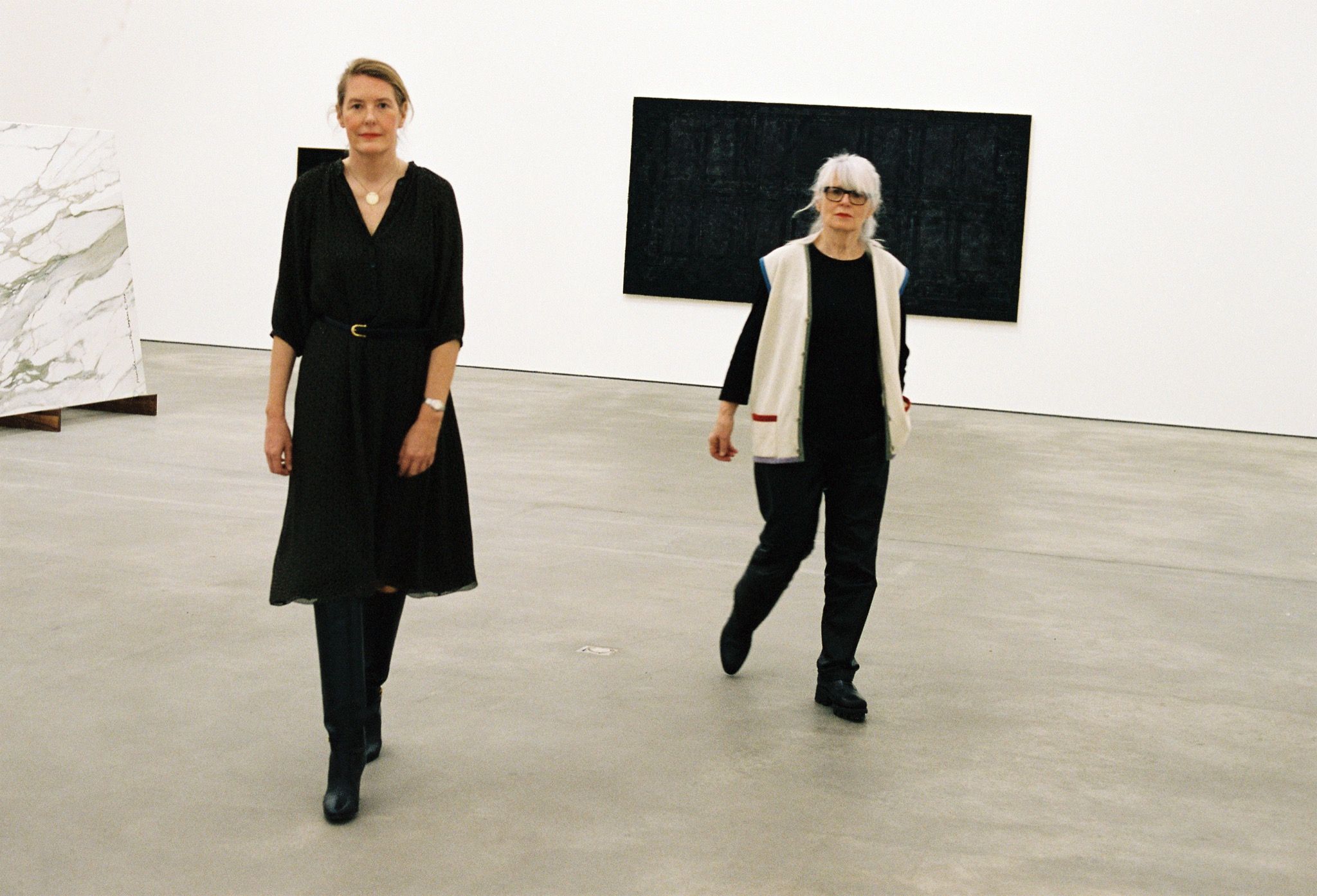
VC: Operations, discourse, and connections are happening on a global level. Meanwhile, art is produced in all of these different localities – often for export, sure, but is there a local quality to the output that is unique to cultural production?
PM: I had a really interesting conversation with Sterling Ruby recently, after the fashion video he did for Paris Haute Couture Week, where he is the first American in over a decade to debut a collection. Obviously, they were working with restrictions, and they made everything at the studio, all of the clothes – which I always consider to be sculptures. He found a radical way to create sculptures that are more affordable. He makes them with people in LA that are well compensated. They did the shoot for the Paris presentation in the backyard of the LA studio. For me that encapsulates what is happening at the moment: you also have to come up with a concept for a Paris Haute Couture runway show – the highest level you can reach in the fashion industry – from scratch, in your backyard. There is a certain beauty to that, and I think it is something that the world needs to get back to, to keep things interesting. There is the beauty to things being in and of a certain place. It reminds me of the first time I went to the Philadelphia Museum to see The Large Glass (1915–1923) by Marcel Duchamp – and his Étant donnés (1946–66), an incredible site-specific piece that, like the Rothko chapel in Houston, needs to be in a specific place in the world. Because that’s where the magic is happening.
VC: We need places of pilgrimage – places of specificity, which ties to the idea of shooting a glamorous Haute Couture presentation in the yard that Sterling Ruby’s studio team sees every day.
MS: A very unglamorous situation!
VC: And Étant donnés could be called an unglamorous situation, too. You are in a strange back room looking through a little hole. But the specificity makes it so special.
MS: Most museums look more or less the same. It’s so great to go somewhere where you can experience that kind of contact – and these experiences, in the last ten years, have gotten lost. Collectors also started to think their collections all had to cover the same ground. The specifics of the local culture get lost there, too.
VC: 2020 acted as an accelerant for discussions people were having already, spotlighting networks of shipping and trade and how we operate globally in a stratified society. So how do we use that momentum, that invitation to change how we produce culture?
PM: I was just looking through old magazines that were lying around in my house, and I came across an issue of Blau from like four years ago and thought, “why did I put this on the side?” Then I saw the editorial, by Cornelius Tittel. I remembered we had just had lunch together, and I was talking to him about galleries and the environment. I told him that for a couple of years already I’d been having this moment when I’d see these crates coming in with all these labels on them, and be struck that all these artworks had been around the world at least once and what that subsequently meant to the ecosystem. We’ve all discussed it already; for years we’ve been feeling a bit sick to our stomachs around our carbon footprint. Obviously, artists want everybody in the world to see their works – and art really needs to be seen. We can’t just do everything digitally. It’s creating a lot of questions, and there are no easy answers. The pandemic is the pandemic, but the threat is the threat. What is clear is that we now require an approach that is more responsive to political and global situations. That is the upside of the pandemic: when you are sitting at home working from your home office and looking at the global landscape, you have time to think about what you really value, to rethink the old structures and consider how the world would be, ideally, in the future. I think the future is thinking about alliances, rather than this idea of doing everything yourself.
Credits
- Text: Victoria Camblin
- Photography: Christian Werner
